Women's Rights & Issues
Related: About this forumThe Glamorous, Sexist History of the Women's Restroom Lounge
(an absolutely fascinating read)
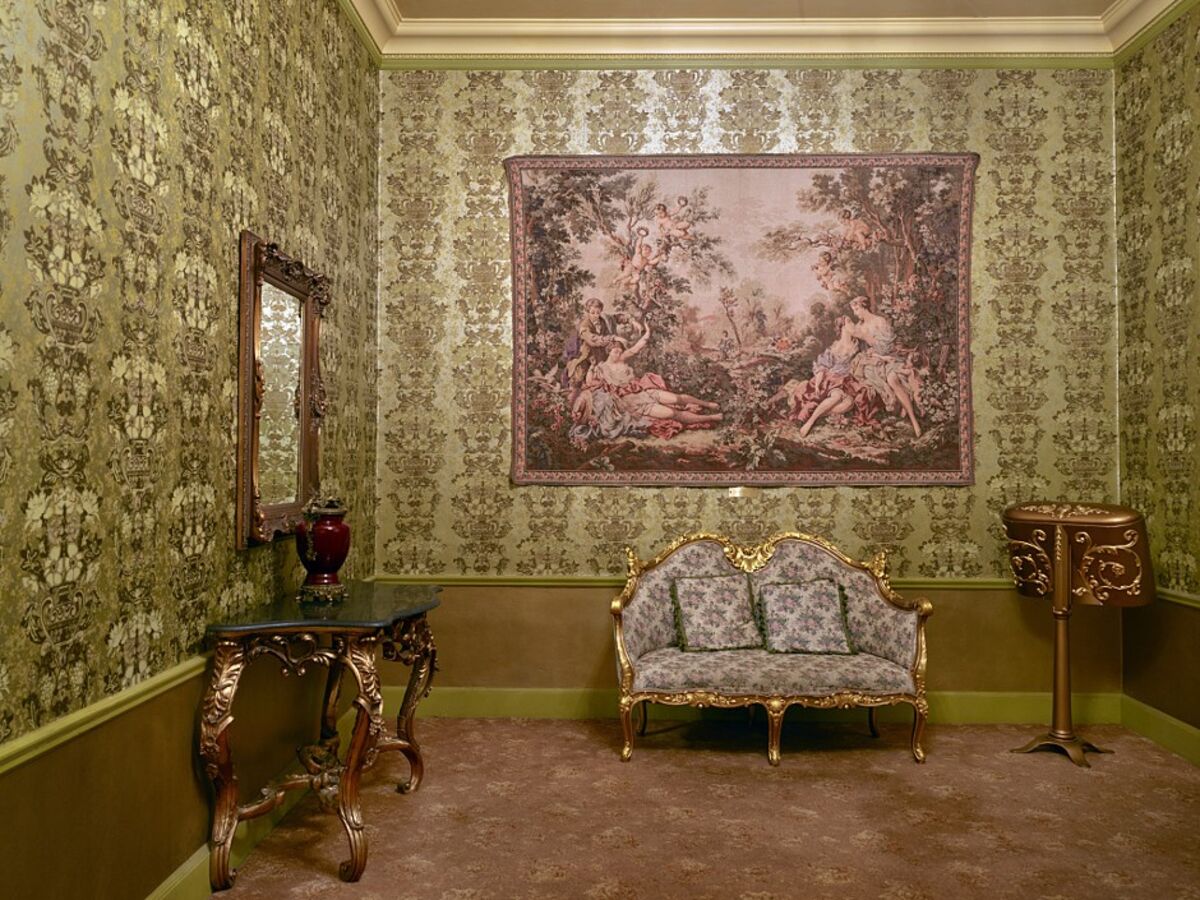
The opulent anteroom to a ladies' restroom at the Ohio Theatre, a 1928 movie palace in Columbus, Ohio.
Photographer: Carol M. Highsmith/Library of Congress
CitylabDesign
The Glamorous, Sexist History of the Women’s Restroom Lounge
Separate areas with sofas, vanities, and even writing tables used to put the “rest” in women’s restrooms. Why were these spaces built, and why did they vanish?
By Elizabeth Yuko
December 3, 2018 at 6:00 AM MST
At the 1851 Great Exhibition in London, thousands of people lined up to see one of the event’s most talked-about attractions. For a penny, visitors could not only see this modern marvel up close, but they also had the opportunity to test it out, pulling chains that demonstrated how the new technology worked. It was a mahogany-seated flushing toilet in a women’s restroom. The Great Exhibition was one of the first major recorded events that featured public restrooms. Millions of people visited the Crystal Palace during the months it was open, and the organizers knew that people would be coming for the entire day and would need a place to relieve themselves. And for women, this included a parlor attached to a room of toilet stalls. “The Victorians ... valued privacy and modesty, and we see that translated into the public restrooms, especially these lounge spaces attached to women’s rooms,” said design historian Alessandra Wood. “If you think about Victorian garments, they were very big—hard to get in and out of—and you’d actually need a space to get undressed to go to the bathroom, and then get dressed again.”
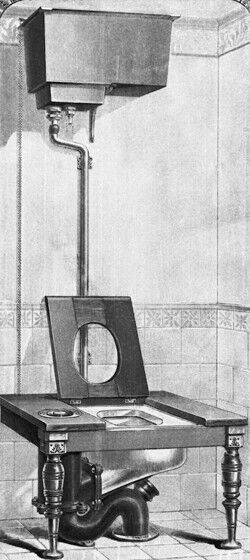
Toilet with cistern, bracket, chain, and black walnut seat, circa 1880.Photographer: Bettmann/Getty
Even though we no longer wear the type of layered clothing that requires a separate room to undress before using the toilet, it’s still possible to find parlors or lounges attached to public restrooms, especially in older department stores and theaters. If you’ve ever come across one, you may have wondered how it got there and why people thought they needed what were essentially public living rooms directly adjacent to bathrooms. As it turns out, it’s a curious combination of Victorian culture, class and race divisions, retail marketing, and what men thought women needed when they ventured out in public (hint: it’s a couch). It was rooted in the idea of separate spheres: that women’s place was in the home and men’s was outside, in public. So when middle-class women did venture into public for extended periods—when they went to the theater, for example—it was thought that they required a private, safe, gender-segregated space of their own that looked and functioned like part of their home. “They were designed like living rooms—like parlors—as spaces to protect virtue,” Wood said.
. . . .
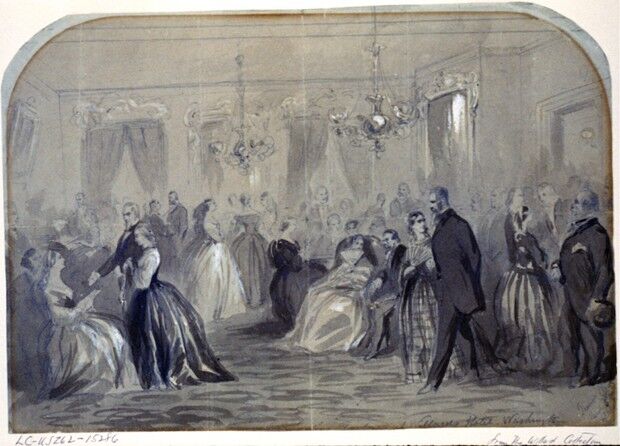
The ladies’ parlor at the Willard Hotel in Washington, shown during Inauguration Week in 1861. Presumably, men were welcomed inside during an inauguration party.Source: Library of Congress

The gentlemen’s parlor, reading, and sitting room at the Willard, also shown during 1861’s inaugural celebrations, with no women visible.Source: Library of Congress
One of the key figures in establishing public restrooms was Isaiah Rogers, a Boston architect who, in 1828, was contracted by local businessmen to design what was in effect the first luxury hotel in America: the Tremont House. “The challenge to Rogers was in, part, that he had to make this building sort of supportive of commerce, which was developing in Boston,” Kogan said. “On the other hand, he was caught in the shadow of the separate-spheres ideology, and what he decided [to do] within the Tremont House was to create spaces that were sex-segregated.” Rogers created rooms exclusively for men and for women, including separate parlors and a library and a billiard room for men. “The significance of that, in my view, cannot be overstated,” said Kogan. “Rogers and the investors … were basically tipping their hats to the separate-spheres ideology, while creating spaces in the public realm for women to become active consumers in the 19th-century economy.”
. . . . .

The women’s parlor at the Emporium in San Francisco offered visitors periodicals and stationery in addition to a place to rest. Similar impressive but no-longer-existing spaces could be found at Higbee’s in Cleveland, the Jordan Marsh Company in Boston, and at the “rest rooms” at Lansburgh & Bro. department store in Washington, D.C. Today, you can still find seating areas adjacent to the women’s restroom in many Nordstrom stores across the country, as well as at Bloomingdale’s and the St. Regis Hotel in New York City.
. . .
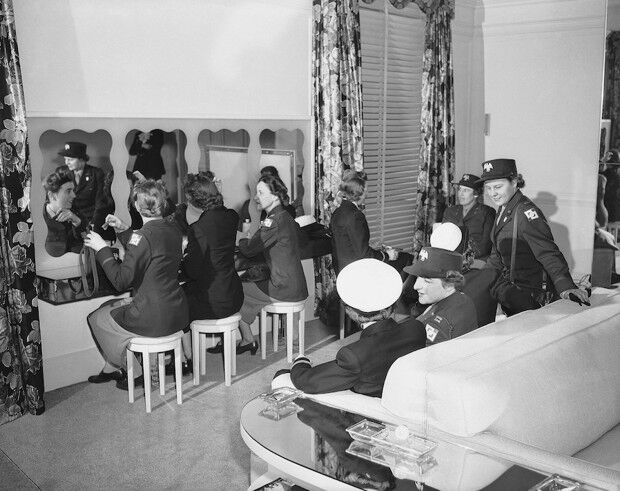
American servicewomen chat and apply makeup in the powder room of a women’s military-services club in New York during World War II.Photographer: Bob Wands/AP
. . .
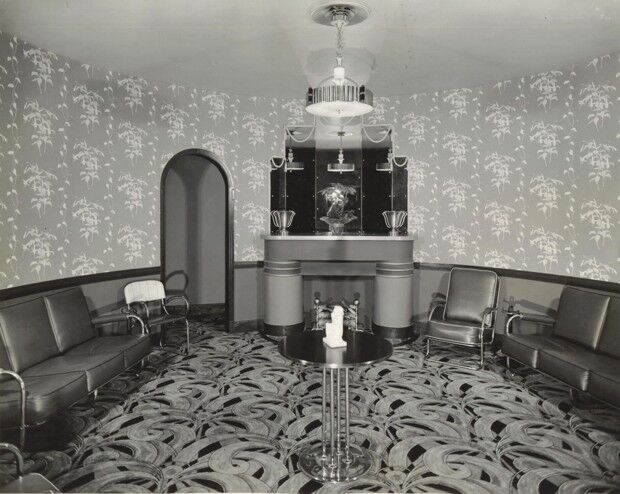
The women’s lounge at the Senator Theatre in Baltimore, shown in an archival photograph.Courtesy: Rob Holmes
. . .
Although most new buildings don’t have dedicated lounge areas next to restrooms, some have “family rooms” that accommodate people who need to change a child’s diapers or breastfeed. Unlike their predecessors, these rooms tend to be nongendered, reflecting the shift toward a more inclusive concept of parenting. New initiatives like Stalled aim to pave the way for all-gender multi-user restrooms across America. But the women’s-only lounge isn’t extinct just yet. The trendy Millennial women’s club The Wing has a “Personal Space” zone that includes a changing room, a nursing room, and a beauty room featuring a row of vanities and plush velvet chairs that wouldn’t look out of place in an Art Deco theater. The idea is no longer for women to hide out from the stresses of being in public—they don’t need an “emergency room.” But as they prepare to go out and meet friends or give a presentation at work, they can still appreciate a touch of old-school glamour.
https://www.bloomberg.com/news/features/2018-12-03/the-rise-and-fall-of-the-women-s-restroom-lounge